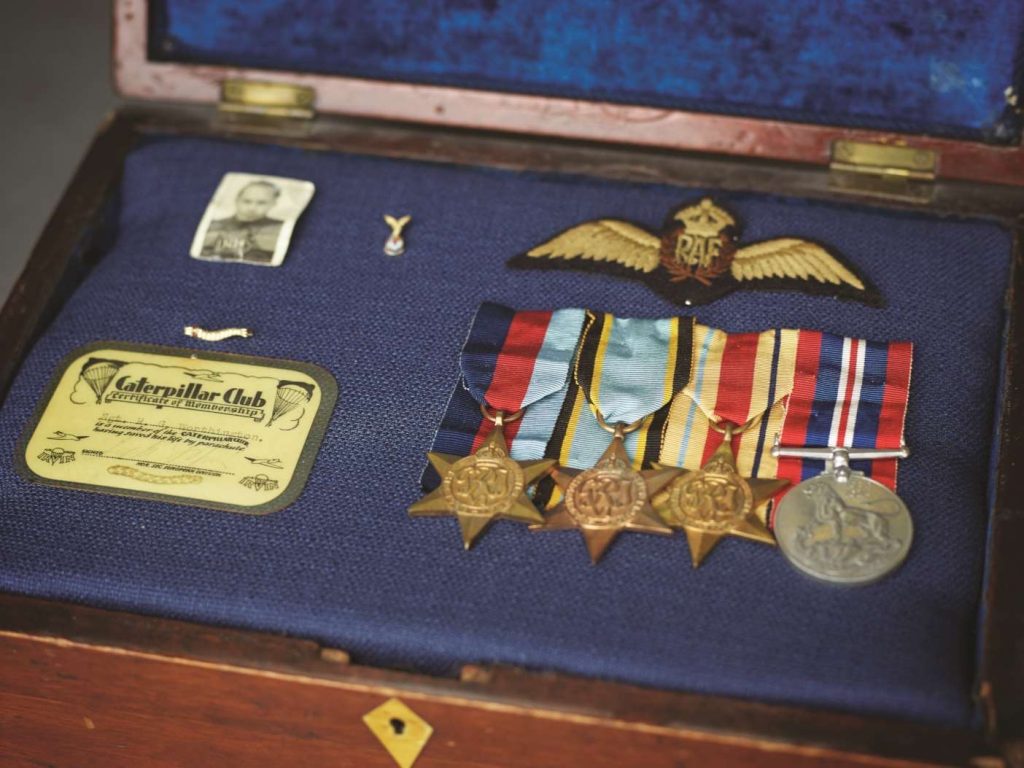A seemingly inconspicuous event on the 21st May 1944 led to the creation of this project as it is now. Without that event, who knows whether this project would exist, or if it did, whether it would be in its current form.
R.G. Worthington answered the call as soon as war broke out; he commenced his pilot training with the RAF in December 1939. A Sergeant pilot initially, spending a short spell on 136 Sqn before, in late 1941, a more permanent posting came to 274 Sqn in the North African desert flying the Hawker Hurricane. Whilst there and amidst bitter fighting, he was forced to bale out; this action would see him fracture his spine, as his parachute failed to deploy correctly. After a period of recovery, the then Warrant Officer joined 184 Squadron in the UK, still flying Hurricanes in the ground attack role. After a brief conversion to the Spitfire Vb in October 1943, 184 Sqn converted to the Typhoon in January 1944. A few months later, he took a commission.
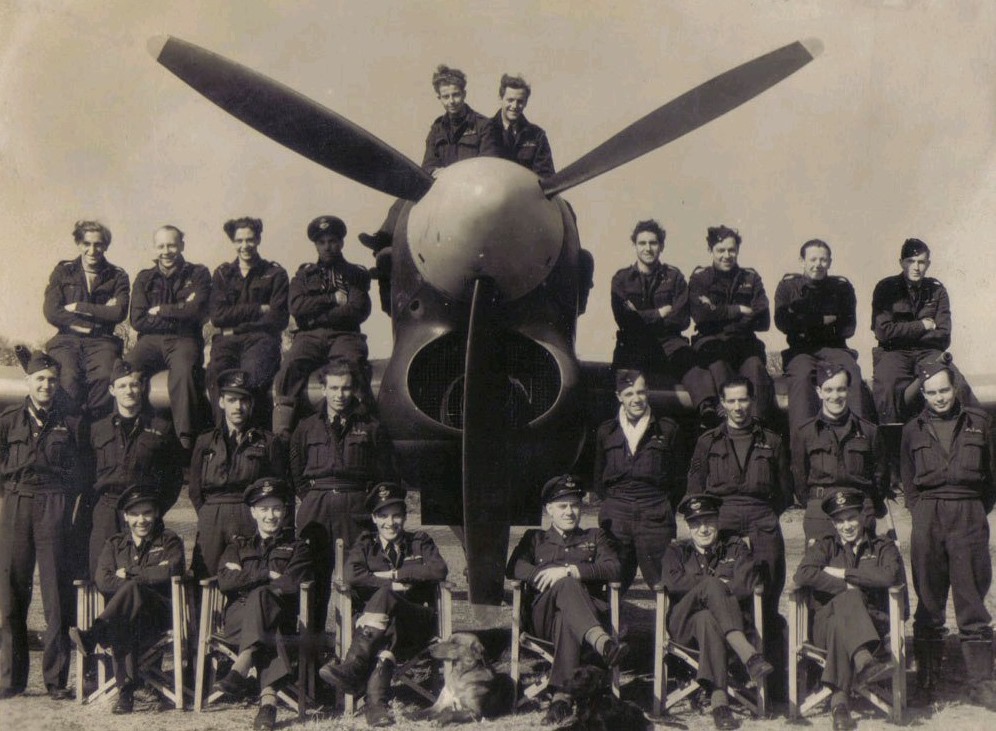
And so, 76 years ago on the 21st May 1944, Roy, by now a Pilot Officer, was due to head off on leave. Instead, he was hanging around the dispersal at RAF Westhampnett (now Goodwood Aerodrome). His friend was chalked to go on that day’s mission, but wanted to catch a train into London. As was common in those days, Roy said “I’ll do your trip for you, you go off and catch the train”. Clearing it with the CO, his fate was sealed. He would not return from that trip, instead he would force land his stricken Typhoon, MN252, in the Walcheren Islands and go on to be incarcerated in Stalag Luft III. He had just been married. Roy would survive his ordeal in the PoW camp, enduring the Forced March in the winter of 1944/45 as the camp inmates were marched, in awful conditions, away from the advancing Russian forces. He wrote a novel during his time in captivity, using his Red Cross notebook and a pencil. His last day in service was Christmas Eve, 1945. A natural pianist, he never flew again, went on to teach children with special needs, and like many others, did not feel his contribution had been particularly significant.
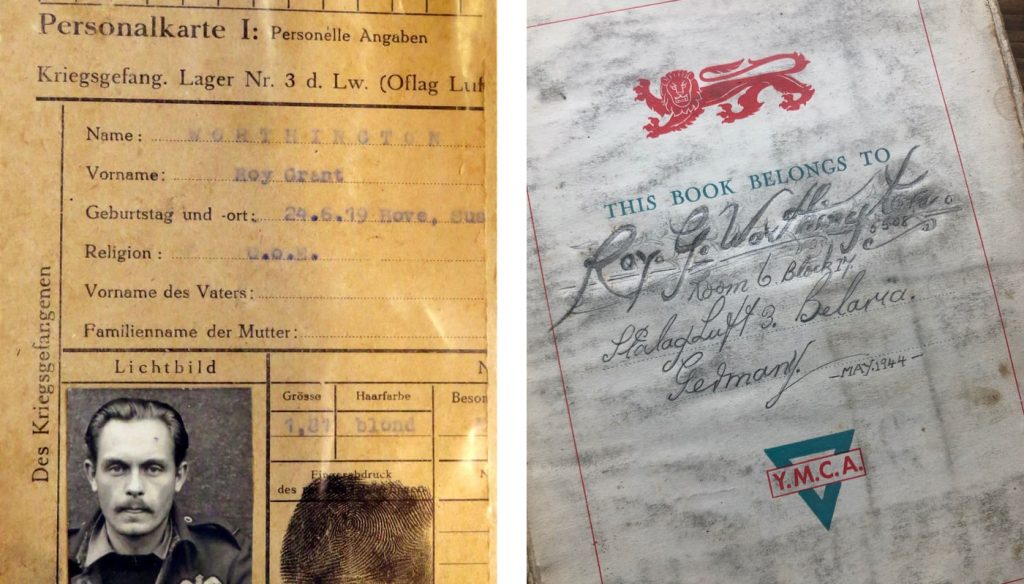
It was not a particularly notable mission, nor was he an out of the ordinary pilot for the time, nor was the aircraft a special one. But him flying that mission, on that day, in that aircraft, and force landing in that area, was a story that would be picked up some 70 years later.
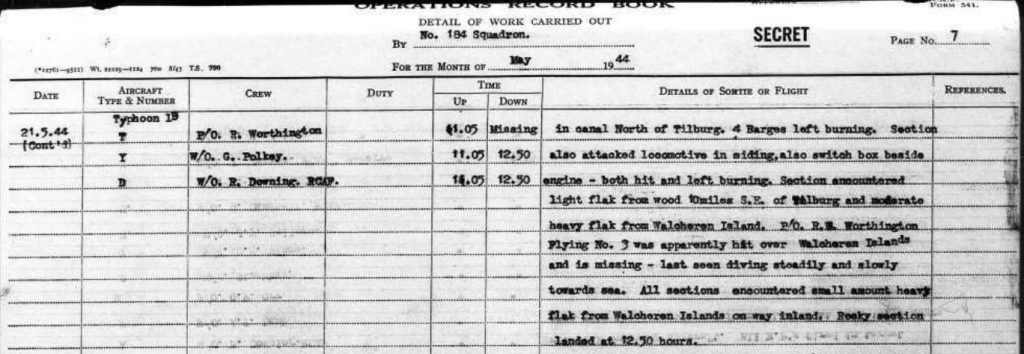
Sam Worthington-Leese, Roy’s grandson, had always possessed a passion for aviation and, WWII aviation in particular. Inherited almost certainly from his grandfather, although he passed away when Sam was young, Sam joined the RAF in 2009, hoping to follow in his footsteps. Sam left the RAF in 2012, a victim of the 2010 Defence Review. It would appear that dream was cut short.
In 2013, having gained his professional qualifications, Sam was commencing work as a Flying Instructor, in various aircraft types. He was also researching his grandfather’s wartime history. He discovered, miraculously, that some parts from the aircraft Roy was flying on that day in 1944 were recovered at the time and were being offered for sale. Sam endeavoured to contact the seller.
It was this contact that led his path to cross with Dave Robinson, who had been researching the Typhoon and collecting parts quite independently for many years. Dave was also trying to track down the same parts. When learning of the family link, Dave shared his research with Sam, and stated that he wished to rebuild a cockpit section replica, to educate people on the role of the Typhoon and sacrifices of its crews.
A few weeks later a small brown box arrived for Sam from the Netherlands. Inside was a cockpit light fitting, fuse box – still with two intact glass fuses – and a piece of the throttle mechanism. These parts were from the very aircraft his grandfather had departed Goodwood and been shot down in, on the 21st May 1944. Even more important, is that they would have been parts he would have touched or operated.

Inspired by this, Sam contacted Dave to let him know. The two spoke again. Dave stated that he had all the parts or drawings required to rebuild an aircraft, including the rear fuselage of RB396 which was a verifiable identity, but that it wasn’t possible because of the cost. Sam asked how much, with a fair idea in his head from his involvement in vintage aircraft. The reply was – “£5million”. With the knowledge that Dave had an extensive collection of parts, many drawings, had tracked down an engine and it was looking hopeful for it to come into his collection, Sam remarked that “if the only thing stopping it is the money, then let’s get together and raise it”.
And with that, in late 2014, the project to rebuild Hawker Typhoon RB396 to airworthy condition was born, sparked by the seemingly random actions of the 21st May 1944.
For many years, the project was just Sam and Dave; Dave providing the parts and the research knowledge, Sam providing the drive to take it to a wider audience and begin to chip away at the huge fundraising target. To date, in the four years since Dave and Sam formed the Hawker Typhoon Preservation Group, they have raised in excess of £650,000 towards the total. As the project developed, and some core team members came on board, the subject of who would fly the aircraft when it was finished was discussed. The entire team agreed that since Sam was a professional pilot, well on the way to gaining the relevant experience required, that he had been responsible for taking Dave’s many years of research and turning it into the project it now was, and he had been involved from day one of the project, perhaps it should be him?
At this point, Sam had been a professional flying instructor for some years and was steadily building tailwheel experience. He was mirroring his grandfather’s training down to a tee, in amongst many other types he had flown the Tiger Moth, then progressed to the Harvard, just as his grandfather would have done. All of this was a prerequisite to piloting high performance warbirds, his ultimate aim. Obtaining his Display Authorisation in 2016, under the guidance of his mentor, Cliff Spink, Sam took another step forward. Then in 2018 Sam was asked by the founder of the Aircraft Restoration Company, John Romain, to join his team and fly the ultimate fighter – the Spitfire.
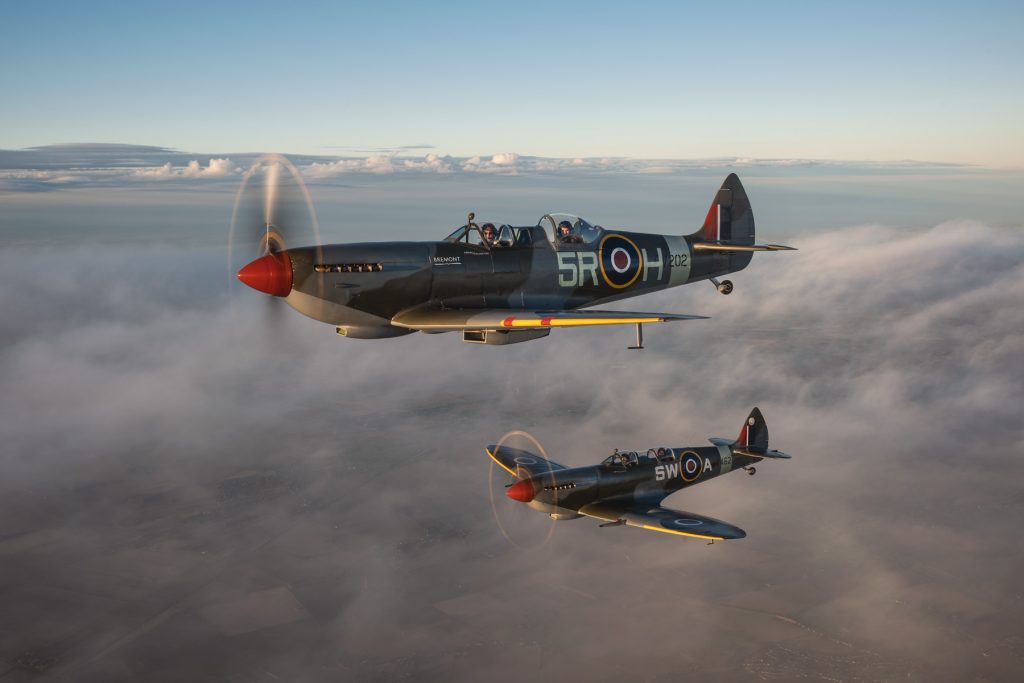
Because they are “non-structural” the parts from Sam’s grandfather’s aircraft, MN252, are going to be incorporated into the rebuild of RB396. When complete and it is suitable to do so, it is hoped that Sam can fly RB396 from the former RAF Westhampnett, on the anniversary of that final flight all those years ago. The aircraft may even wear MN252’s codes, even if just for the day and it will close the loop of this cross-generational family story that has its roots on that fateful day, 21st May 1944.
Had Roy not been shot down in that aircraft, on that day, he may well not have survived the war. That period of time was the lead up to D-Day and the invasion of northern France, the battle that followed was bloody and brutal, with 149 Typhoon pilots killed in the 76 days of the Normandy campaign, more than the fair share of Typhoon pilots killed. It is safe to say Roy would have had no idea of the repercussions of his decision to take his friend’s flight that day in 1944. But, if MN252 did not come to rest in the Walcheren Islands on that day, and Roy survive to pass on his genes, it is entirely likely that the project to rebuild RB396, sparked into life when Dave’s path crossed with Sam’s, would not exist.
Help us make this a reality and be a part of this incredible story.
